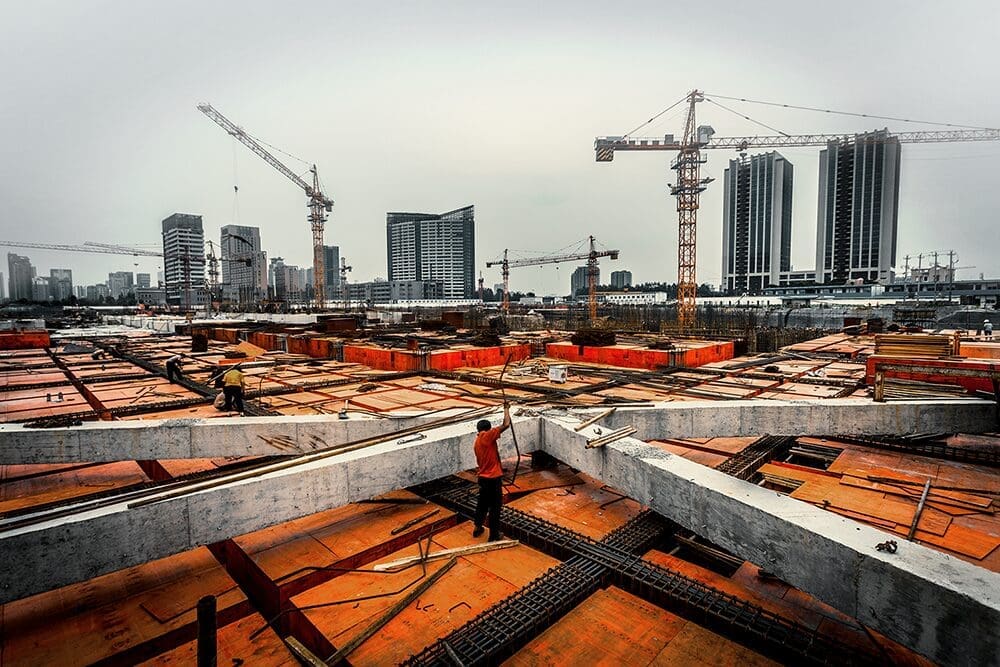The construction sector is seeing an increase in activity all over the world. Driven by positive economic growth, low interest rates and strong demand, revenues for the sector look set to continue an upward trajectory in the coming years.
An increased level of output not only means lots of opportunities for growth and expansion across the construction sector, it also means increased pressure on supply chains.
Construction supply chains face several distinct challenges and risks when compared to other sectors, and without active management, projects can begin to drain resources, time and money.
Every construction project is unique, and they will often involve teams of consultants, contractors and suppliers that only ever work together once. As a result, supply chains can include a wide array of procurement systems, organisations and disciplines. On larger, more complex projects responsibility can get lost further down the supply chain as you reach a large group of smaller suppliers. Knowing everyone in your supply chain and what they are doing daily can be difficult for management.
Global growth – a mixed picture
The growth picture is not uniform around the world, and behind the macro view of increased growth and output lies a variety of regional challenges and dynamics.
Chinese growth slows at last
Firstly, China’s construction industry looks set to slow down considerably over the coming years. PwC cites the first ever decline in housing output in the country’s recent history, and its continuing shift to a consumer and service-based economy.
This means both the US and Indian construction sectors could grow faster than their Chinese counterpart over the next 15 years, but all three countries will still account for 57% of global growth.
Pressure on margins in Europe
Despite a recent return to growth across Europe, supply chain pressure remains a big issue for companies in Ireland, the UK and the Netherlands as a shortage of subcontractors and materials places stress on margins. Many buyers are looking to digital solutions to help them combat labour shortages and substantially improve their productivity.
Infrastructure investment drives Latin American growth
The construction industry in Latin America is undergoing a period of distinct change that is creating challenges for operators across the region. Despite widespread economic growth across the region in 2018, it continues to face turbulence due to socio-economic and political factors. New governments in Brazil, Mexico, Colombia, Paraguay and Costa Rica as well as upcoming elections in Argentina will likely lead to large increases in public expenditure on construction.
Business Monitor International is expecting 1.9% real growth across the region, driven by increased commodity prices, private capital infrastructure developments such as public private partnerships (PPPs) and a general improvement in the economy. In particular, Argentina’s predicted 3.5% growth spurt will be driven by new PPP projects, which the government expects will generate $26.5 billion in investment between now and 2022.
There is growing public pressure on Construction companies to be transparent about how they qualify their data and gain contracts. Corruption, collusion and price fixing have long been problems holding back progress in the region. This has combined with increasing concerns over worker health and safety and the environmental impact of supply chains.
“Latin American construction operators are going to have to adapt to meet these challenges, but their supply chains are not operating as effectively as those in other regions,” says Nicolas Avellaneda, Sales Director, Latin America at Achilles. “The region is one step behind when it comes to transparency.”
How to prepare for increased demand
The construction sector has the potential to experience real growth in the coming years, but the way supply chains operate and are managed needs to change too. Our communities, like Regic or StartBANK , help lay the foundations for scalable growth by increasing transparency and giving buyers and suppliers access to clean, validated data.
Also, we help you reduce the risk in your supply chain by making available to your company validated and timely information of your suppliers, to help you make better decisions based on reliable information.
For operators in Latin America, this could be the difference between growth and stagnation in the near future. But it is also important for Chinese operators looking for opportunities in a changing economy, or European companies looking to secure the best talent from a limited pool.
By putting data at the heart of the relationship between buyers and suppliers, we help make planning, forecasting, budgeting and execution more effective.
For the construction industry, pre-qualification is becoming an important standard. This is one of the main strengths of our communities. Through our audits and qualification schemes, buyers and suppliers are able to operate in complete clarity. Not only does this help to increase transparency, it also helps sharpen competitive edges and create scalable models.
A good supply chain can adapt to any challenge. Our communities help create them in the quickest, simplest and most effective way possible.


